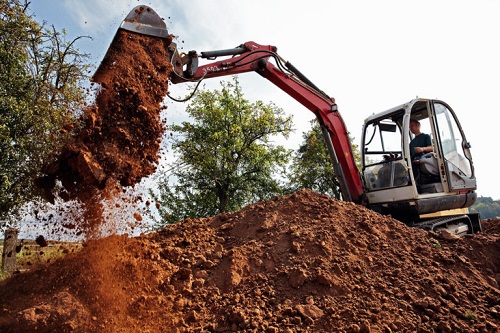
8.16.22 – Insurance Journal
The mother of a man killed on a Baltimore construction site who was barred by Maryland’s workers’ compensation law from suing the contractor hired by the city has lost a bid to hold the city and subcontractor liable.
The court affirmed that under the common law of Maryland one who hires an independent contractor is not liable to an employee of that contractor for injuries caused by the contractor’s negligence.
The decision further affirmed that the duty of a contractor or subcontractor on a construction job to exercise due care to provide for the safety of the employees of other contractors or subcontractors is owed with respect to conditions that the contractor or subcontractor creates or over which it exercises control.
The appeal arose from the death of 20-year-old Kyle Hancock, who was buried alive while working at an excavation site at a city pool. At the time, Hancock was a laborer employed by R.F. Warder, Inc., an independent contractor hired by the city of Baltimore to perform the excavation work. Also on site at the time was Keith Sutton, the sole member of Sutton Building Solutions (SBS), a subcontractor to Warder.
Since Hancock’s mother (and his father’s estate) were prevented by Maryland’s workers’ compensation laws from bringing negligence claims against Warder, they brought survivorship and wrongful death actions against only the city of Baltimore and Sutton. The Hancocks alleged that Baltimore was liable because it failed to exercise reasonable care in hiring Warder, and that Sutton was liable because he recognized the dangerous condition of the excavation site but failed to warn Hancock of the danger.
The Hancocks’ complaint alleged that Warder was not competent and qualified to perform the excavation work safely and properly, and that the city knew this, claiming that, on a prior job for the city, the city’s supervisor, John Habicht, noticed that Warder had committed the same mistake at an excavation.
The Hancocks argued that the duty to hire competent contractors extends to all third persons, including employees of the contractors.
As to Sutton, the Hancocks alleged that he failed to maintain safety at the jobsite and failed to make sure that Warder had the requisite knowledge, training, and experience to perform the work, and that Sutton was liable for his own negligence, for which SBS was vicariously liable.
The Maryland Court of Appeals rejected the Hancocks’ arguments and upheld lower courts that had concluded that although the city had a duty to exercise reasonable care in hiring the independent contractor, the city’s duty did not extend to Warder’s own employees who were engaged in that work.
The appeals court also agreed with lower courts that absent any allegation that Sutton had created the dangerous worksite condition or exercised control over it, Sutton did not have a legally enforceable duty to warn Hancock of the hazard.
Sutton was assisting with the excavation. Hancock was digging on the east side of the excavation, the side that wasn’t sloped, while Sutton was digging on the west end, the sloped side. Sutton looked at the site and stated out loud, but to no one in particular, that this was not safe. Nobody responded to his comment. Sutton entered the excavation and despite recognizing the dangerousness of the situation, including the significant risk that the east wall could collapse, Sutton took no action to stop the work or advise Hancock to exit the excavation. Instead Sutton decided to stay a safe distance away from the east wall so that if it collapsed, he would not be hurt. A bit later, Sutton noticed the east wall starting to give way. He yelled for Hancock to run. Hancock tried to run. Unable to escape, he was buried alive under tons of dirt and debris. He died of asphyxiation.
The city acknowledged that it had a duty to hire competent contractors, and that that duty extended to “third persons.” However, the city argued that its duty did not extend to employees of an independent contractor that created the dangerous condition that resulted in the injury.
Sutton contended that the proper legal standard for assessing the liability of one subcontractor to an employee of another subcontractor for an injury on a multi-contractor worksite is whether the contractor “created or controlled” the dangerous condition that caused the employee’s injury, and that Sutton could not be liable for Hancock’s death because he neither created nor controlled the condition that killed Hancock.
The court agreed with the city and Sutton.
While state law makes one who retains an independent contractor liable to “third persons” for physical harm caused by the acts of the contractor, the court said the question in this case was to whom Baltimore owed that duty and, specifically, whether Hancock fell within the class of “third persons” to whom the duty was owed. The court concluded that he did not.
The court noted that Hancock came into contact with Warder through their employment relationship, not because of any act or omission of Baltimore. The city was not responsible for exposing Hancock to Warder.
Unlike third party bystanders and passersby, who may be left without recourse if an independent contractor lacks the means to compensate them for injuries, a contractor’s employees are covered by workers’ compensation laws, the court noted, waring that adopting the reasoning proposed by the Hancocks would “alter the consequences of the workers’ compensation scheme by allowing a path to tort recovery for some workers—those hired by certain entities that work as independent contractors—but not others; and to impose tort liability for worker injuries on some principals—those who hire certain independent contractors—but not others.”
In ruling as it did, the court said it is agreement with the majority of states that have considered the issue and with Maryland caselaw concerning the tort of negligent hiring.
